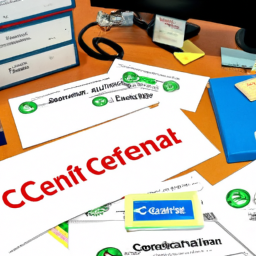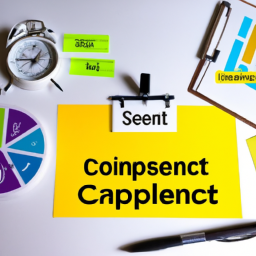Are you ready to ace the SCRUM exam? Boost your success rate by avoiding these 7 common mistakes.
Picture yourself confidently navigating through the exam, armed with the right knowledge and strategies. Don’t make the mistake of neglecting proper preparation or underestimating the importance of SCRUM values.
Misunderstanding roles and responsibilities, lacking knowledge of artifacts and events, and failing to apply agile principles can cost you valuable points.
Stay tuned to discover the key pitfalls to avoid and ensure your success in the SCRUM exam.
Key Takeaways
- Employ effective preparation techniques and utilize appropriate study materials
- Familiarize yourself with the official Scrum Guide and practice exams to assess knowledge
- Clearly define team roles, foster open communication, and encourage collaboration
- Understand and familiarize with Scrum artifacts and events, and apply knowledge in real-world scenarios
Lack of Proper Preparation
One common mistake to avoid in the scrum exam is the lack of proper preparation. To increase your chances of success, it is crucial to employ effective preparation techniques and utilize appropriate study materials.
Scrum exams require a thorough understanding of the framework and its principles, as well as the ability to apply them in real-world scenarios. Start by familiarizing yourself with the official Scrum Guide and study it diligently.
Additionally, consider joining study groups or engaging in online forums where you can discuss concepts and gain insights from others. Practice exams are also invaluable for assessing your knowledge and identifying areas that require further attention.
Neglecting the Importance of Scrum Values
Neglecting the importance of Scrum values can hamper your chances of success in the exam. Scrum values are fundamental principles that guide effective teamwork and collaboration in Scrum projects.
By ignoring these values, you risk undermining the very essence of Scrum and its ability to deliver successful outcomes. The five Scrum values – commitment, courage, focus, openness, and respect – are crucial for fostering a productive and harmonious team environment.
Commitment ensures that team members are dedicated and accountable for their tasks. Courage encourages individuals to take risks and make decisions that benefit the project. Focus helps the team stay on track and achieve their goals. Openness promotes transparency and effective communication. Respect creates a supportive and inclusive atmosphere where everyone’s contributions are valued.
Misunderstanding Scrum Roles and Responsibilities
In Scrum, it’s crucial to understand the roles and responsibilities of each team member to avoid confusion and ensure efficient collaboration.
Role confusion can arise when team members are uncertain about their specific tasks and accountabilities within the Scrum framework.
Role Confusion in Scrum
Don’t confuse your role in Scrum – understanding your responsibilities is key to success. Role conflicts can arise within a Scrum team, leading to confusion and inefficiency. It is important to have a clear understanding of your role and how it fits into the overall team dynamics.
Here are five points to keep in mind to avoid role confusion in Scrum:
-
Clearly define team roles: Make sure each team member understands their specific responsibilities and how they contribute to the team’s goals.
-
Foster open communication: Encourage team members to express any concerns or issues regarding role conflicts, and address them promptly.
-
Encourage collaboration: Emphasize the importance of working together as a cohesive unit, valuing each member’s contributions.
-
Regularly review and adjust roles: As the project evolves, roles may need to be adjusted to accommodate changes in priorities or team dynamics.
-
Provide ongoing training and support: Continuously invest in the development of your team members’ skills and knowledge to ensure they are equipped to fulfill their roles effectively.
Clear Responsibilities in Scrum
Make sure you clearly understand your responsibilities in Scrum to ensure efficient teamwork and project success.
In Scrum, clear communication and effective collaboration are crucial for the smooth functioning of the team.
As a member of the Scrum team, your responsibilities include actively participating in all Scrum events, such as daily stand-ups, sprint planning, sprint reviews, and retrospectives.
You should also prioritize and deliver the highest value work items within each sprint, ensuring that the team meets the sprint goals.
Additionally, you need to maintain transparency by updating the Scrum board regularly and providing accurate progress updates.
Inadequate Knowledge of Scrum Artifacts and Events
Having inadequate knowledge of scrum artifacts and events can hinder your success rate in the scrum exam. It is important to understand and familiarize yourself with these key elements of scrum in order to effectively apply them in real-world scenarios and pass the exam.
Scrum artifacts are tangible items that provide transparency and information about the project’s progress, such as product backlog, sprint backlog, and product increment.
On the other hand, scrum events are time-boxed activities that enable collaboration, inspection, and adaptation, such as sprint planning, daily scrum, sprint review, and sprint retrospective.
Failing to Apply Agile Principles in Scrum Practices
Failing to apply agile principles in Scrum practices can undermine the effectiveness of the project and hinder the team’s ability to deliver value.
The Agile mindset is at the core of Scrum, emphasizing adaptability, collaboration, and continuous improvement.
By neglecting these principles, teams risk falling into traditional project management approaches that can be rigid and less responsive to change.
Effective communication is a key aspect of the Agile mindset, promoting transparency and collaboration among team members.
Agile principles encourage open and honest communication, enabling teams to identify and address issues promptly.
This fosters a culture of trust and empowers team members to share ideas and concerns.
Overlooking the Importance of Continuous Improvement
When it comes to continuous improvement in agile practices, two key points to keep in mind are ignoring feedback for growth and neglecting retrospective meetings.
Ignoring feedback from team members and stakeholders can hinder your growth and prevent you from making necessary improvements. Similarly, neglecting retrospective meetings, where you reflect on what went well and what didn’t, can lead to missed opportunities for learning and growth.
Ignoring Feedback for Growth
Ignoring feedback can hinder your growth and success in the scrum exam. Embracing a growth mindset and actively seeking feedback is essential for continuous improvement and achieving better results.
Feedback is a valuable tool that allows you to identify areas of improvement, address weaknesses, and enhance your overall performance. By implementing feedback effectively, you can optimize your learning process and increase your chances of success in the scrum exam.
Here are five key reasons why you should pay attention to feedback:
-
Gain valuable insights: Feedback provides you with valuable insights and different perspectives that can help you identify blind spots and areas for improvement.
-
Enhance self-awareness: Feedback helps you become more self-aware by highlighting your strengths and weaknesses, enabling you to focus on areas that need improvement.
-
Foster personal growth: By embracing feedback, you create an environment of continuous learning and personal growth, allowing you to develop new skills and improve existing ones.
-
Build trust and collaboration: Actively seeking and implementing feedback demonstrates your willingness to learn and grow, fostering trust and collaboration within your team.
-
Improve performance: By addressing feedback and implementing suggested changes, you can improve your performance and increase your chances of success in the scrum exam.
Neglecting Retrospective Meetings
By neglecting retrospective meetings, you miss out on valuable opportunities for team reflection and continuous improvement. Retrospectives are a crucial aspect of the Scrum framework, allowing teams to look back on their work and identify areas for growth and enhancement.
These meetings provide a safe space for team members to openly discuss their successes, challenges, and ideas for improvement. By facilitating retrospectives effectively, you can ensure that the team gains maximum value from these sessions.
Effective retrospectives involve creating a positive and inclusive environment, encouraging open and honest communication, and focusing on actionable next steps. It is important to establish clear goals and objectives for each retrospective and to follow up on action items in subsequent meetings.
Lack of Time Management and Exam Strategy
To improve your success rate in the scrum exam, make sure you prioritize time management and develop a solid exam strategy.
Time management techniques can help you effectively allocate your study hours and ensure that you cover all the necessary topics. Additionally, having an effective exam strategy will allow you to approach the exam with confidence and maximize your chances of success.
Here are five key points to consider:
- Create a study schedule: Plan your study sessions in advance and allocate specific times for each topic.
- Break it down: Break the material into smaller, manageable chunks to make it easier to study and retain information.
- Practice, practice, practice: Take practice exams and quizzes to familiarize yourself with the format and types of questions you may encounter.
- Review and revise: Regularly review your notes and revise any areas that you find challenging.
- Stay calm and focused: On the day of the exam, stay calm, read the questions carefully, and manage your time effectively.
Frequently Asked Questions
Are There Any Specific Recommended Study Materials or Resources for Preparing for the SCRUM Exam?
When preparing for the SCRUM exam, it’s important to have the right study materials and resources. There are several recommended study materials that can help you succeed.
Online resources, such as practice exams and study guides, are widely available and can provide valuable insights into the exam format and content. These resources can help you familiarize yourself with SCRUM principles and practices, and increase your chances of success in the exam.
How Long Does It Typically Take to Prepare for the SCRUM Exam?
Typically, it takes about 4-6 weeks to prepare for the SCRUM exam. However, don’t let the time frame discourage you. With effective time management and the right study materials, you can succeed.
Many have found success by using recommended study materials like practice exams and study guides. Remember, it’s important to study consistently and focus on understanding the principles of SCRUM.
Don’t rush the process, take your time and ensure you’re fully prepared. Good luck!
Can You Provide Any Tips or Strategies for Effectively Managing Time During the Exam?
During the SCRUM exam, it’s crucial to effectively manage your time. To do this, try using time management techniques such as creating a study schedule and setting specific time limits for each question.
Additionally, strategies for staying focused during the exam include taking short breaks to refresh your mind, avoiding distractions, and practicing mindfulness.
Is There a Passing Score Required for the SCRUM Exam, and if So, What Is It?
To pass the SCRUM exam, you need to meet a passing score. This score varies depending on the specific exam you are taking. It is important to review the study materials provided to understand what score you need to aim for.
Familiarize yourself with the exam format and content, and practice with sample questions to increase your chances of success. Remember, preparation is key to achieving your desired passing score.
Are There Any Prerequisites or Requirements for Taking the SCRUM Exam?
Before taking the SCRUM exam, it’s important to understand the prerequisites and requirements.
The exam doesn’t have any specific prerequisites, meaning anyone can take it. However, it’s recommended that you have some prior knowledge or experience with SCRUM methodology.
As for requirements, you will need to register for the exam and pay the necessary fees. Additionally, you may need to provide identification and meet any language proficiency requirements set by the exam provider.
Conclusion
To conclude, by avoiding the common mistakes mentioned above, you can significantly boost your success rate in the Scrum exam.
Proper preparation, embracing Scrum values, understanding roles and responsibilities, and having knowledge of artifacts and events are crucial.
Applying agile principles, continuously improving, and managing time effectively are also vital.
Remember, with the right approach, you can ace the exam and achieve your goals in the Scrum framework.
Stay focused, stay determined, and success will surely follow!




















